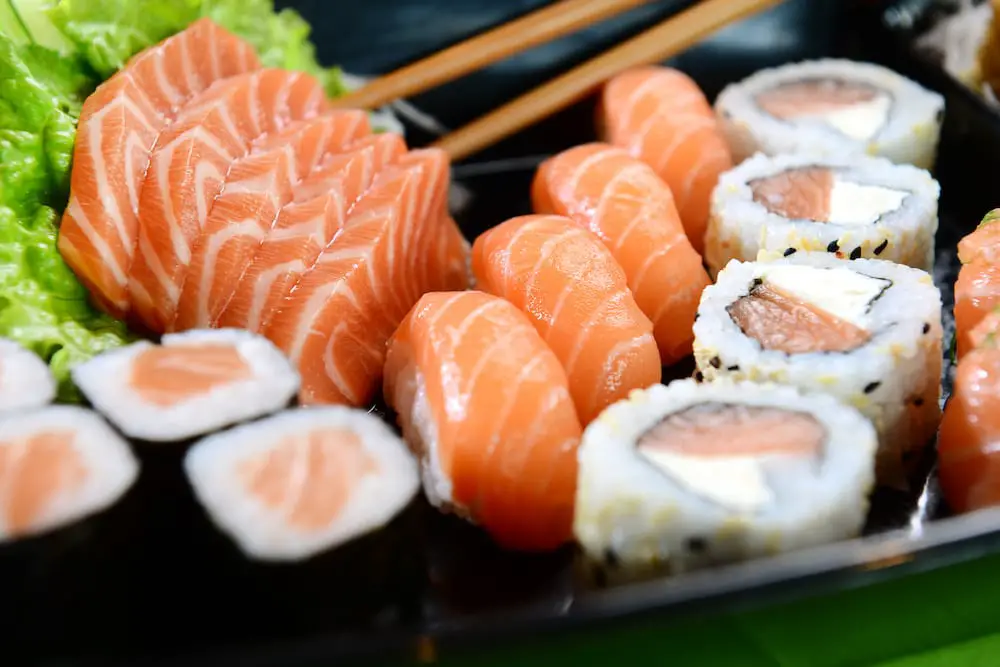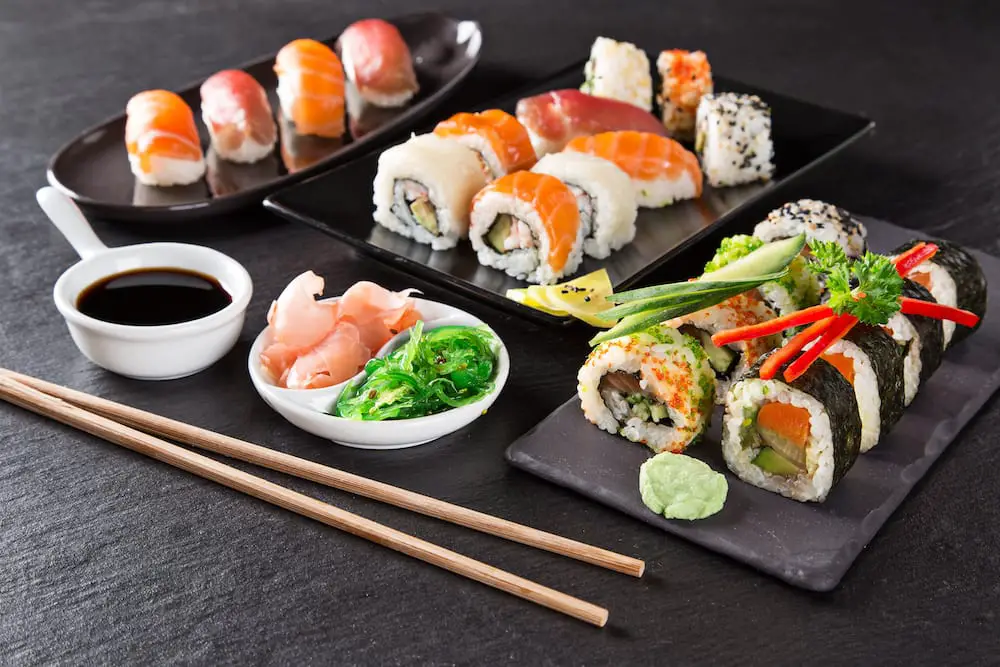Japanese cuisine is incredibly unique yet simple. Two different delicacies may sound similar, have similar ingredients, and even look similar yet taste completely different. Hence, ordering or cooking Japanese dishes can be a little confusing.
Perhaps the most commonly asked question is, “what is the difference between sushi and sashimi?” If you have a similar question, you aren’t alone. Here, we tried to sum up almost all major differences between different varieties of sushi and sashimi.
What Is the Difference Between Sushi and Sashimi
Probably the most common reason why many are confused with these two traditional Japanese dishes is the use of raw fish. While sashimi is made of raw fish, sushi doesn’t always have to have raw fish.
Here is a comprehensive list of their differences to help you determined why sushi is different from sashimi:
The Name
This is less obvious than it seems to be. It is important to know how to pronounce well to be served well at a restaurant, especially if you are not a native. Sushi has two syllables and is pronounced as soo-shee. On the other hand, sashimi has three syllables and is pronounced as sah-shee-mee.
The Meaning
The word sushi is a combination of the Japanese words su and shi, where “su” means vinegar, and “shi” is driven from “meshi,” which is Japanese translation for rice. Hence, technically, sushi means vinegar and rice. These two are sushi’s essential ingredients.
In sashimi, “sashi” means pierced, and “mi” refers to meat. Hence, sashimi translates to “pierced meat.” The name of the dish is reflective of its simplistic preparation method.
The Ingredients
Sushi, as the name suggests, is made of rice and vinegar. Sushi rice is of distinct quality. These short-grain rice are clump together to be easily rolled into sushi rolls and other forms.
Although the key ingredients are rice and vinegar, there are several other add-ons, which may or may not include raw fish. These add-on ingredients include everything from egg and seaweed to cucumber and avocados.
Sashimi, on the other hand, is purely made of premium quality raw fish. Mostly, saltwater fish is used. Freshwater fish is not suitable as it can have parasites, which can cause intestinal distress.
This fish, mostly tuna or salmon, is of a special quality. It is caught on a single line instead of a net and is killed and frozen immediately. This helps keep the fish fresh and inhibits the production of lactic acid in it.
The Preparation
Sushi is prepared in several steps. First, rice is boiled and mixed with vinegar. Then, the boiled rice is shaped in rolls and is sometimes stuffed with vegetables or fish. These rolls are finally wrapped into thin sheets of seaweed called “nori.”
On the other hand, sashimi is prepared by finely slicing fish meat using a sushi knife. While sushi preparation is quite labor-intensive, sashimi needs just some fine cuts performed a professional.
The Condiments
Sushi is served with plain Japanese soy sauce. If you are a food geek, you might be interested to know that this soy sauce is called “shoyu.”
Whereas, sashimi is served usually with white radish called “daikon radish.” The finely sliced orangish sashimi lying gracefully on a bed of white daikon radish is a typical presentation.

The Types
This difference is particularly going to fascinate a food geek. There are several kinds of sushi and sashimi based on different ingredients used to make them, as well as their serving styles.
Types of Sushi
Let’s first discuss the different types of sushi that are commonly available:
- Maki-Zushi: This is the simplest type of sushi and is made of rice and seaweed rolls with vegetables and fish.
- Nigiri-Zushi: This is the most common type of sushi available. It is a little finger-like roll of rice topped with a fillet of cooked or raw fish and wasabi. It is also served with shellfish.
- Chirashi-Zushi: This type of sushi is quite different from the rest. You will see sushi rice topped with a variety of sashimi served in either a box or a bowl.
- Temaki-Zushi: This type looks fascinating as it is shaped like a cone. Cones of sushi rice are filled with fish and vegetables and wrapped in seaweed.
- Inari-Zushi: Lastly, inari-zushi is made of fried tofu and sushi rice.
- Sushi can either be hand roll or cut roll.
Types of Sashimi
That was a deep dive into the world of sushi. Let’s move forward to the different types of sashimi:
- Maguro: Sashimi made of tuna fish is called maguro. Tuna and salmon are the most common types of fish used to prepare sashimi.
- Turo: This is another variant of tuna sashimi, but it is made of fatty tuna.
- Ebi: Sashimi can also be made from prawns. This variant is called ebi, which means prawn or lobster.
- Saba: This variant of the traditional Japanese dish is made of mackerel fish.
- Ika: Sashimi made of squid is known as ika.
- Tako: Tako is made using octopus. While other variants of sashimi are made of raw tuna, salmon, prawns, yellowtail, and squid, this one is served cooked because octopus’ meat is chewy.
The Health Benefits
Overall, Japanese cuisine is known for its health benefits. Although both sushi and sashimi have several health benefits, sashimi is comparatively healthier. This is because sashimi preserves the natural goodness of fresh and raw fish.
Sushi, on the other hand, can often contain fried ingredients, spices, and even mayonnaise, which adds to the calorie count. However, you can look for brown rice sushi without fried ingredients for a healthier option.
Conclusion
Although both sushi and sashimi sound and often look similar, there is way more detail that makes each dish very different from the other. From the name and meaning to the ingredients and health benefits, both dishes are unique.
Both dishes can be quite pricey. Sushi is expensive because of the labor-intensive preparation it requires. Sashimi often costs more because higher-grade fish is used compared to sushi, which costs a great deal more.
We have tried to sum up the major differences between the two dishes mentioning the contrasting details where necessary. Now, next time you visit a Japanese restaurant or cook at home, you will know what is the difference between sushi and sashimi!

